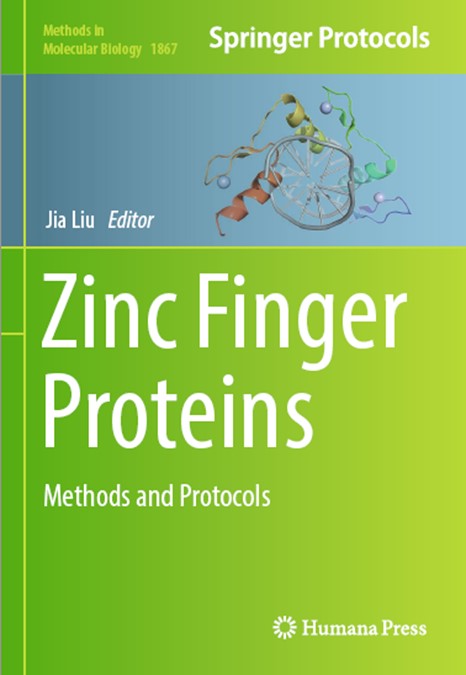Research Associate Professor Liu Jia from SIAIS Professor Jiang Biao’s ADC Chemistry Lab has completed editing the 1867 volume of Methods in Molecular Biology (MiMB) with titled “Zinc Finger Proteins: Methods and Protocols,” now available from Springer, Amazon and other booksellers.
The MiMB series, providing methods and protocols in molecular biology, was founded by editor John Walker in 1983 and is well known for providing step-by-step experimental procedures. The first MiMB volume specializing in zinc finger proteins (ZFPs) was edited by Professor Joel Mackay and Professor David Segal in 2010. In response to notable progress in recent years on both the basic research and therapeutic applications of ZFPs, the new MiMB volume on ZFPs covers the methods and protocols of cutting-edge ZFPs technologies, providing thorough guidance for researchers in the ZFPs field.
ZFPs are the most abundant transcription factors in eukaryotes, playing important roles in a variety of biological functions such as DNA methylation, DNA transcription, cell cycle, cell division, tumorigenesis and others. ZFPs bind zinc ions via cysteine and histidine residues and can be categorized into C2H2, C4, and CCHC type ZFPs, according to different means of chelating zinc ions. Decades of studies have deciphered the DNA recognition of ZFPs. Artificial ZFPs along with the newly emerged TALE and CRISPR systems have been widely used in gene regulation and genome engineering fields. Recent studies also have proven that zinc finger nucleases, which contain ZFPs as the DNA binding domain, are safe in human trials, which sheds some light on the potential of ZFPs for biomedical applications.
This MiMB volume of ZFPs contains three parts, divided into 19 chapters covering topics such as the basic biological functions, design of artificial ZFPs, evaluation of the cytotoxicity, and delivery methods. It will facilitate both basic ZFPs research and development of next-generation ZFP therapeutics.


